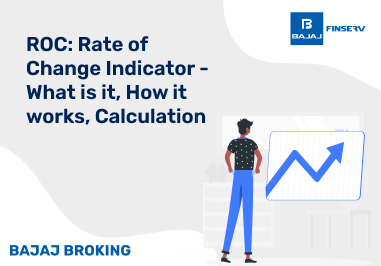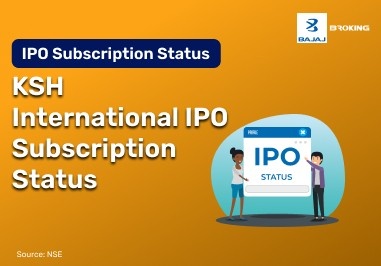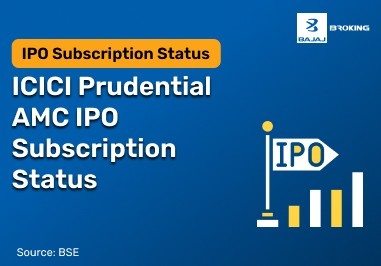Intraday Trading Strategies in 2024?
Intraday strategy for you may vary depending on factors like volatility, liquidity and price movement exhibited by the security. Scalping, momentum trading, reversal trading, breakout trading, gap trading, pullback trading and moving average crossover trading are a few of the most commonly used intraday trading strategies.
Scalping
Scalping is one of the best intraday strategy for high-frequency traders. It involves purchasing and selling quickly to capture micro-price movements in a security. The average holding period for this particular type of strategy often ranges from a few seconds to a few minutes. Since the profit potential for each trade is very low, traders who use this method generally make multiple trades throughout the day to compensate.
One of the prerequisites for scalping is liquidity. A highly-liquid security makes it easy to enter and exit positions quickly. However, since the potential for losses is also high with this strategy, it is crucial to use strict stop losses and other risk management practices to mitigate risk and lower the potential for losses. Many highly-experienced traders use sophisticated algorithms and programs for scalping. These automated programs execute hundreds of trades per day, following a certain specific set of instructions.
Momentum Trading Strategy
Also known as the trend-following strategy, this one of the best intraday trading strategy involves entering into positions that match the current market trend. For instance, if the market trend is bullish, you enter into a long position and if the trend is bearish, you enter into short positions instead. The average holding period for this strategy could range from a few minutes to a full trading session.
Traders typically use this strategy to hold onto their positions until they hit their profit targets or until the prevailing trend reverses. If you want to use this strategy, you must track the security you wish to trade in for a while before you enter into a position. By getting to know the current trend of a security and its potential reversal points, you can make an informed trading decision. Additionally, you should also keep an eye out for news that may potentially impact the price of a security. The news could pertain to relevant earnings reports, economic data and the overall geopolitical scenario.
Reversal Trading Strategy
One of the best intraday trading strategies is the reversal strategy. It involves entering into a position at or near the point of a trend reversal. For instance, if a stock is on a bullish trend, the strategy would require you to wait until the trend reverses from bullish to bearish before entering into a short position. On the other hand, if a stock is on a bearish trend, you would enter into a long position as soon as the trend reverses from bearish to bullish.
The reversal strategy is considered to be very risky since it may occasionally require you to go against the trend. In such situations, the losses can be significant if the trend doesn’t reverse. Also, the success of the strategy depends primarily on your ability to accurately determine the potential trend reversal or pullback points. To increase the chances of success, it is advisable to use technical indicators and candlestick patterns to confirm trend reversals before entering into a position.
Breakout Trading Strategy
A breakout is a market situation where a security’s price breaks out of a trading range. This includes breaking out of either a support or a resistance level. A breakout trading strategy involves entering into a position at or near a potential breakout point. Once the price breaks out of the range as expected, the trade would start becoming profitable.
For instance, let’s say a stock is declining and it reaches its immediate support level. Due to the intense selling pressure, the stock breaks its support level and continues its decline. In this case, you enter into a short position at or near the price point where the stock breaks out of its support level. You can continue to hold your short position until the price reaches your target or till the next support level. The same logic applies to a stock that’s rising. The only difference is that you need to enter into a long position once it breaks out of its resistance level.
Pullback Trading Strategy
A security trending in a particular direction may briefly go against the trend before continuing its original trend. This temporary switch in the trend is what market experts call a pullback. A pullback trading strategy involves entering into a position right when the pullback ends. Here’s an example to help you understand how this strategy for intraday trading works.
Assume a stock is going through a bullish phase. Fuelled by intense buying pressure, the stock breaks out of a resistance level and rises further. However, within a short while, it falls back down briefly but still remains above the resistance level. This particular scenario is an example of a pullback.
After the short pullback, the stock then continues to rise once again. The pullback strategy requires you to enter into a long position at or near the point where the stock continues to rise again after experiencing the brief market correction.
CFD Trading Strategy
A Contract for Difference (CFD) is a type of financial derivative that lets traders bet on the price movements of an asset without actually holding ownership of it. This strategy is widely used in stock markets, commodities, forex, and indices because it allows traders to enter both long (buy) and short (sell) positions based on market expectations.
The core principle of CFD trading is to capture the difference between the entry and exit prices of a trade. If a trader expects the price of an asset to increase, they open a long position (buying the CFD). Conversely, if they predict a price drop, they open a short position (selling the CFD). The profit or loss is determined by the difference between the opening and closing prices, multiplied by the number of units traded.
One of the biggest advantages of CFDs is the ability to use leverage, enabling traders to manage a large position with a comparatively small investment. However, while leverage amplifies potential profits, it also increases risks, as losses can exceed the initial investment.
Moving Average Crossover Trading Strategy
A moving average is a technical indicator traders use to identify potential buy or sell signals. A moving average crossover, on the other hand, is a market phenomenon where two moving average lines of different time frames (one shorter and the other slightly longer) crossover one another. The type of position you need to enter depends on how the moving averages cross over one another.
For example, if the moving average line of a shorter time frame crosses above the moving average line of a longer time frame, the market sentiment is said to be bullish. You can enter into a long position at or near the point of the crossover. On the other hand, if the shorter moving average line crosses below the longer moving average line, the market sentiment is said to be bearish. In such a situation, you can enter into a short position at or near the point of the crossover.
Intraday Trading Tips For Beginners
Starting intraday trading can be overwhelming, but applying structured tips can help you build consistency and confidence. These tips focus on practical, risk-managed steps that help beginners develop discipline and avoid common mistakes. Let’s explore the basics every new intraday trader should follow.
Identify and pick the right stocks
Begin with liquid stocks that have high daily volumes. These stocks offer smoother entry and exit options. Choose 2–3 stocks and study their price movements daily to get familiar with their behaviour before placing trades.
Set a stop loss to limit risks
Always decide on a stop loss before entering any trade. This prevents significant losses in case the market moves against your position. A fixed percentage or technical level can be used to mark your exit point.
Plan trades and manage them well
Set a clear entry point, target price, and exit strategy. Don’t change your plan based on emotions once you’re in the trade. Stick to your plan and avoid impulsive decisions that can increase losses.
Track hit rate or win percentage
Keep a record of your trades to calculate your success rate. Analysing your hit rate helps in identifying patterns, understanding strengths and weaknesses, and improving decision-making over time.
Apply proper position sizing rules
Don’t risk your entire capital on one trade. Use a fixed percentage (like 1-2%) of your capital per trade to manage risks better and stay in the game longer.
Define a clear risk-reward ratio
Aim for trades where the potential reward is at least twice the risk (e.g., 2:1). This ensures that even if you lose some trades, your winning trades cover the losses and yield profit overall.
Avoid overtrading and book profits timely
Don’t trade too frequently just to stay active. Wait for the right setups and take profits when your target is reached instead of getting greedy and missing exits.
Don’t chase losses with revenge trades
Accept losses calmly. Avoid emotional trades just to recover money quickly, as they often lead to more mistakes and larger losses.
Close all open positions on time
Exit all positions before the market closes to avoid overnight risks. Intraday trades should never be carried forward as they defy the strategy’s core principle.
Stay consistent and follow discipline
Stick to your trading plan daily. Avoid random strategies or shifting approaches too often. Long-term success depends on consistency, patience, and strict discipline.
Intraday Trading Tips For Mid-Level Traders
As you gain experience, it's important to refine your approach. Mid-level traders should focus on improving win rates, risk management, and adapting to evolving market conditions. These tips help build precision and reduce emotional trading.
Identify and pick the right stocks
At this level, look for breakout stocks, earnings-based movements, or sector trends. Use scanners and technical indicators to select the best intraday candidates.
Set a stop loss to limit risks
Go beyond fixed stop losses—start using trailing stop losses to lock in profits while still protecting downside risk.
Plan trades and manage them well
Use a trade journal to reflect on decisions and tweak your plan for different market scenarios. Backtesting strategies can help refine execution.
Track hit rate or win percentage
Segment your win rate by trade type—trend-following vs. breakout vs. reversal. This helps you focus on what works best for your trading style.
Apply proper position sizing rules
Adjust position size based on volatility of the stock and trade confidence level. Use the ATR (Average True Range) to gauge how much buffer to give.
Define a clear risk-reward ratio
Stick to your ratio, but adapt slightly when setups have strong conviction. Still, don’t take trades with reward ratios below 1.5:1.
Avoid overtrading and book profits timely
Use set trading hours and avoid impulse entries outside your planned window. Booking profits on strength prevents giving back gains due to reversals.
Don’t chase losses with revenge trades
Control emotions using post-loss cool-off periods. Take a break, assess what went wrong, and return with a fresh mindset.
Close all open positions on time
Start trailing your exit closer to the market close, especially in volatile conditions, to secure intraday profits efficiently.
Stay consistent and follow discipline
Now is the time to perfect execution, not experiment wildly. Follow your trading checklist daily to reduce decision fatigue.
Intraday Trading Strategies For Experienced Traders
Experienced traders need advanced strategies that offer precise entries and exits with strong risk control. These techniques require fast thinking, technical knowledge, and the ability to respond to market dynamics.
Use the Gap and Go trading approach
This strategy involves identifying stocks that gap up or down in pre-market and ride the momentum. Confirm with volume spikes, price action, and news catalysts.
Do a thorough pre-market analysis
Analyse global markets, economic data releases, and stock-specific news. Combine this with technical setups to create a focused watchlist with solid trade candidates.
Confirm volume trends before market opens
Volume gives life to price moves. Monitor unusual volume activity during pre-market hours to identify stocks with strong participation and follow-through potential.
Trade with the Opening Range Breakout
Mark the high and low of the first 15–30 minutes after market opens. When price breaks either side with volume, it often leads to a strong move you can capitalise on.
Follow strong momentum-based strategies
Trade with the trend using momentum indicators like RSI, MACD, or VWAP. Enter only when momentum aligns with your trend thesis and avoid fading strong moves.
Spot and trade trend reversals smartly
Use candlestick patterns, support/resistance levels, and volume divergence to identify trend reversal zones. Confirm with price action before entering contrarian trades.
Let me know if you’d like a downloadable trading tips checklist or visuals added to this content.
Tips for Intraday Trading
Develop a Robust Strategy: One of the best intraday strategy begins with a well-defined strategy tailored to your trading style, risk tolerance, and market conditions. Whether you prefer technical analysis, fundamental analysis, or a hybrid approach, a clear strategy provides the framework for making informed decisions and capitalizing on market opportunities.
Prioritize Risk Management: Intraday trading is inherently risky, with the potential for rapid gains and losses. Implementing robust risk management practices, such as setting stop-loss orders, managing position sizes, and adhering to a disciplined trading plan, is essential for preserving capital and safeguarding against adverse market movements.
Master Technical Analysis: Technical analysis serves as the cornerstone of intraday trading, providing valuable insights into price trends, support and resistance levels, and potential entry and exit points. Familiarize yourself with key technical indicators, chart patterns, and candlestick formations to identify high-probability trade setups and optimize your trading decisions.
Stay Informed: Intraday traders must stay abreast of market news, economic indicators, and corporate developments that can impact price movements. Regularly monitor financial news sources, economic calendars, and earnings reports to identify potential catalysts and adjust your trading strategy accordingly.
Embrace Liquidity: Liquidity is paramount in intraday trading, enabling smooth order execution and minimizing slippage. Focus on trading highly liquid instruments with tight bid-ask spreads to ensure efficient trade execution and mitigate transaction costs.
Intraday Trading Rules
- Stick to a Plan: The best intraday strategy always starts with a well-defined trading plan that includes entry, exit, and stop-loss levels.
- Risk Management: Ensure you never risk more than a defined percentage of your total capital on a single trade.
- Set Realistic Goals: Avoid setting overly ambitious profit targets. Focus on achievable and consistent profits.
- Avoid Overtrading: Stick to your strategy and avoid making impulsive decisions in response to market movements.
- Time Management: The best intraday trading time is usually during the first two hours of market opening and just before closing.
- Stay Updated: Always stay informed about major market news that could impact stock prices.
- Use Stop-Loss: This rule ensures that losses are minimized by setting a predefined exit price in case the market moves against you.
- Stay Disciplined: Patience and discipline are key in following the best intraday trading strategy.
Additional Read: Intraday Trading Rules
Conclusion
One of the best intraday trading strategy outlined above are far from the only ones traders use. There are several others that rely on the appearance of certain specific candlestick patterns to produce trading signals. Once you’ve mastered these, you can gradually move towards more complex intraday strategies.
That said, before executing a strategy, make sure to have a proper risk management plan in place. This includes restricting position sizes based on the risk-reward ratio of the trade and placing appropriate stop-loss orders. This way, you can reduce the risk and the quantum of losses in case the market goes against your expectations.














